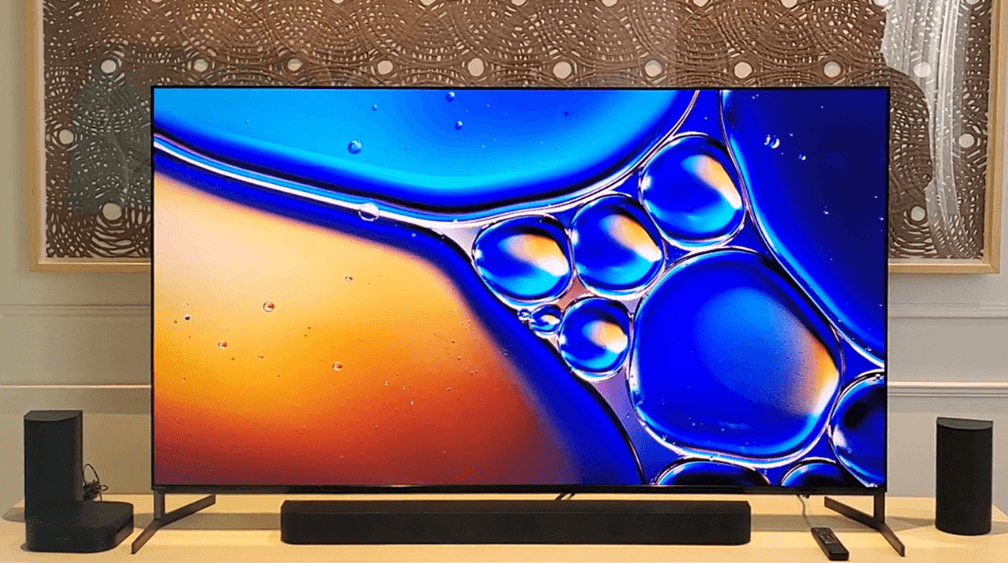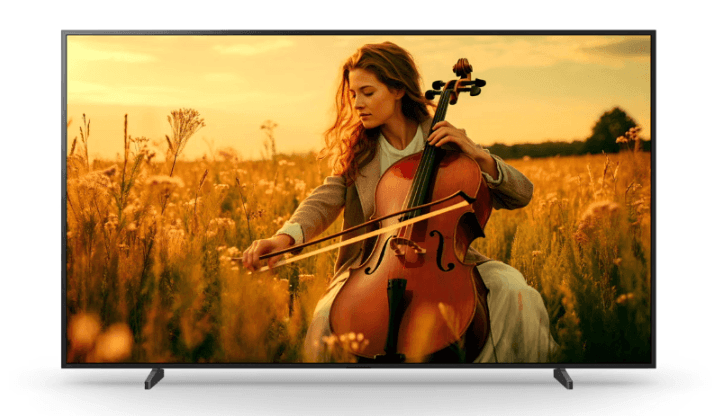
Sony’s brand new QD-OLED television, the Bravia 8 II, is finally available to buy in the U.K., the U.S. and other territories following its global launch yesterday.
The Sony Bravia 8 II goes on sale alongside two other models, the Bravia 5 Mini-LED TV and the Bravia 3 LCD TV, which is the company’s newest budget-friendly option.
Sony first unveiled its new televisions in April, when it said the Bravia 8 II will replace the Sony A95L as its flagship QD-OLED TV, while the Bravia 5 replaces the X90L Mini-LED TV as a midrange option that sits below the company’s flagship Bravia 9 Mini-LED. The Bravia 3 meanwhile, replaces the Sony X75WL that launched in 2023.
The company has only launched three new TVs this year because many of its 2024 models will carry over until next year, including the Bravia 9, the Bravia 8, the Bravia 7, and the X85L. In addition, the 77-inch version of the A95L QD-OLED TV will continue to be sold, as the Bravia 8 II is only available in 55- and 65-inch models.

There are reasons to think the Sony Bravia 8 II (pictured) is going to be a real beauty. It features Samsung Display’s latest-generation QD-OLED panel that delivers much higher brightness compared to the one found on the A95L. It also comes equipped with Sony’s latest XR Processor, which powers an improved AI scene recognition system to analyse and optimise content in real-time so it can tinker with the colours, contrast and detail based on what’s being shown on screen, improving the overall realism of its pictures.
The new QD-OLED panel is really something to get excited about. We’ve seen this already on the Samsung S95F OLED TV that was reviewed by HDTVTest’s Vincent Teoh in May, and it’s quite a thing to behold. The display is paired with Sony’s proprietary XR Triluminous Max and XR Contrast Booster 25 technology and promises to deliver deeper blacks and wider colour reproduction than what we saw on the already-impressive A95L. There’s a boost in brightness too, enabled by Samsung Display’s new high-luminance system and enhanced heat management. According to Sony, this will be evident in its much more dazzling HDR performance.
The Sony Bravia 8 II also delivers improvements in terms of audio, thanks to Sony’s Acoustic Surface Audio+ technology that transforms the display into a central speaker to position the sound according to where it’s emanating from on the screen. We first saw this system in last year’s Sony Bravia 8, which features a WOLED panel made by LG Display. It works extremely well, though a dedicated soundbar (which Sony also conveniently sells) will probably make the sound effects much punchier.
Elsewhere, there’s a new Voice Zoom 3 feature that helps to enhance dialogue clarity, and the sound system will be compatible with Dolby Atmos and – crucially – the DTS:X audio format that HDTVTest confirmed is absent on this year’s 2025 LG OLED TVs.
Check out HDTVTest's video for more details:
The Sony Bravia 8 II is set to go head-to-head with Samsung’s S95F QD-OLED TV, as well as models such as the LG G5 OLED TV, Panasonic Z95B and the not-yet-released Philips OLED910 and OLED950, which all feature the latest RGB Tandem OLED panel manufactured by LG Display.
What’s interesting is that Sony is dropping the usual premium it charges for its higher-end TVs, and so the Bravia 8 II is competitive with all of those models in terms of pricing. According to PriceSpy, the 55-inch model will cost around £2,499 at most retailers, while the 65-inch version is priced at £2,999. Those prices are identical to the Samsung S95F OLED television and the Panasonic Z95B – although we can expect to see some discounts on those models in the near future. However, the LG G5 OLED TV is a bit cheaper, presently priced at £2,199 at John Lewis, for example, down from its usual listing price of £2,399.
Then again, if you're willing to wait, Philips is likely to undercut them all with its OLED910 TV featuring the RGB Tandem OLED panel in October. Last month, the company announced its suggested retail prices, with the 65-inch OLED910 set to go on sale for a staggeringly-cheap £2,199.
We ought to give a little of the spotlight to the Sony Bravia 5 TV too. This is a very competitively priced that will go up against a growing horde of similarly-specced Mini-LED TVs from Chinese brands such as Hisense and TCL, as well as Samsung’s Neo QLED and LG’s QNED televisions.

Picture quality is the main focus of the Bravia 5 (pictured above), and Sony cited its XR Backlight Master Drive technology which controls a dense array of miniature LEDs to enable precise local dimming, resulting in much superior contrast and colour accuracy than any regular LED TV. It also features the new XR Processor, as well as XR Triluminos Pro, XR Motion Clarity, and XR Contrast Booster 10 to help optimise the on-screen pictures and take advantage of that highly-efficient Mini-LED panel.
The Bravia 5 is available in sizes ranging from 55-inches all the way up to 98-inches, with prices starting at £1,399 for the smallest option, rising to £6,999 for the biggest.
Once again, all of Sony’s high-end TVs will be powered by the Google TV operating system, and will include services such as the Sony Pictures Core app for streaming Sony Pictures movies.
Sony’s new release schedule for TVs sees each new model persist for two years, so it probably isn’t going to launch an updated QD-OLED flagship next year (though there may be a second-tier OLED TV to replace the Bravia 8). However, it has already confirmed that a new flagship Mini-LED TV is in the works for 2026, and it will feature the company’s brand new RGB LED backlighting technology that was first announced in March.
The RGB LED display is said to be an enhanced, high-density LED backlight that’s powered by a new control system, enabling each individual LED pixel to be controlled independently. According to Sony, this will mean “higher colour purity” from each pixel and result in a more vibrant, wider colour gamut than previously seen on any Mini-LED TV, so it’s most definitely something to look forward to.